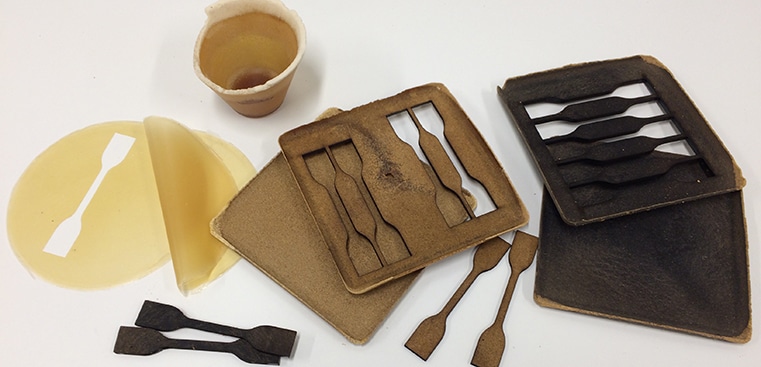Mar 21 2019
How about a disposable cup from which one can drink coffee and then have the cup as dessert. Veronika Bátori, who recently obtained her doctorate in Resource Recovery at the University of Borås, has made the first move toward making the production of disposable products or bioplastic films from fruit waste a reality.
 Biofilm and 3D objects from apple and orange waste. (Image credit: University of Borås)
Biofilm and 3D objects from apple and orange waste. (Image credit: University of Borås)
In the thesis titled “Fruit wastes to biomaterials: Development of biofilms and 3D objects in a circular economy system,” she demonstrates how she investigated this in two types of wastes from oranges and apples.
She opted for them as they are difficult to discard and instead can be used for developing new products. It can contribute to minimizing disposables in the environment.
Both contain a lot of water and organic matter, and if they are put in landfills, they create an uncontrolled methane production. They are also hard to burn because of the water. They don’t work well as animal feed either because of the high levels of sugar and low pH.
Veronika Bátori, PhD, University of Borås.
She employed two techniques to produce bioplastics. One of them is known as the solution casting method, in which a polymeric solution is applied on a non-sticky surface that then gets dried up to a thin bio-based film.
The other technique is known as compression molding, which is an approach to utilize the polymers’ self-binding properties through pressure and heat to form 3D objects.
Can Make Waste Bags for Food Waste
“The materials behaved differently in the different methods. Orange waste films were stronger than apple pomace films, but small holes were present in their structure. To get a uniformed surface, we needed to add a chemical with a low concentration. 3D objects from apple pomace, on the other hand, were much stronger than the ones made from orange waste. Apple pomace in both cases seemed easier to work with.”
She explains the processes as fundamental processes that do not need much chemicals and very high temperatures, which resulted in materials with potential properties.
The products from apple pomace are tastier. I have tasted almost all my products. And they are gluten-free.
Veronika Bátori, PhD, University of Borås.
With regards to 3D objects, she finds it possible to make disposables such as plates or mugs. The plastic films can be used for food packaging or waste bags for food waste, as they decompose rapidly.
“The materials need improvements, for example when it comes to withstanding fluid. Today, they dissolve in water and that is not a good property for a mug. So we need more research and upscaling of the production,” she says.